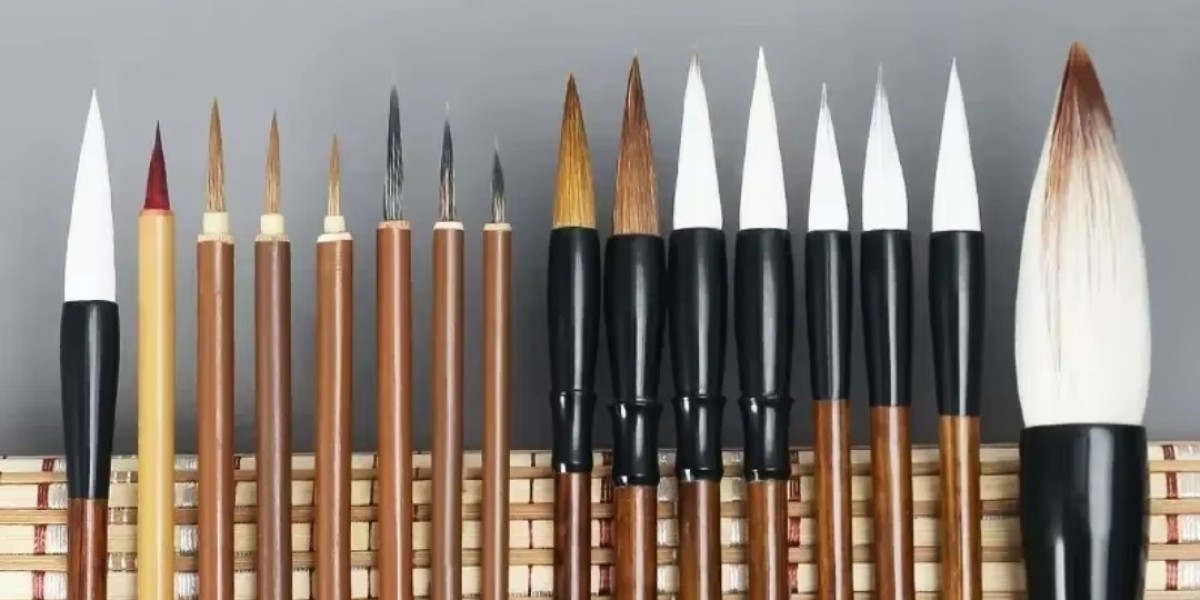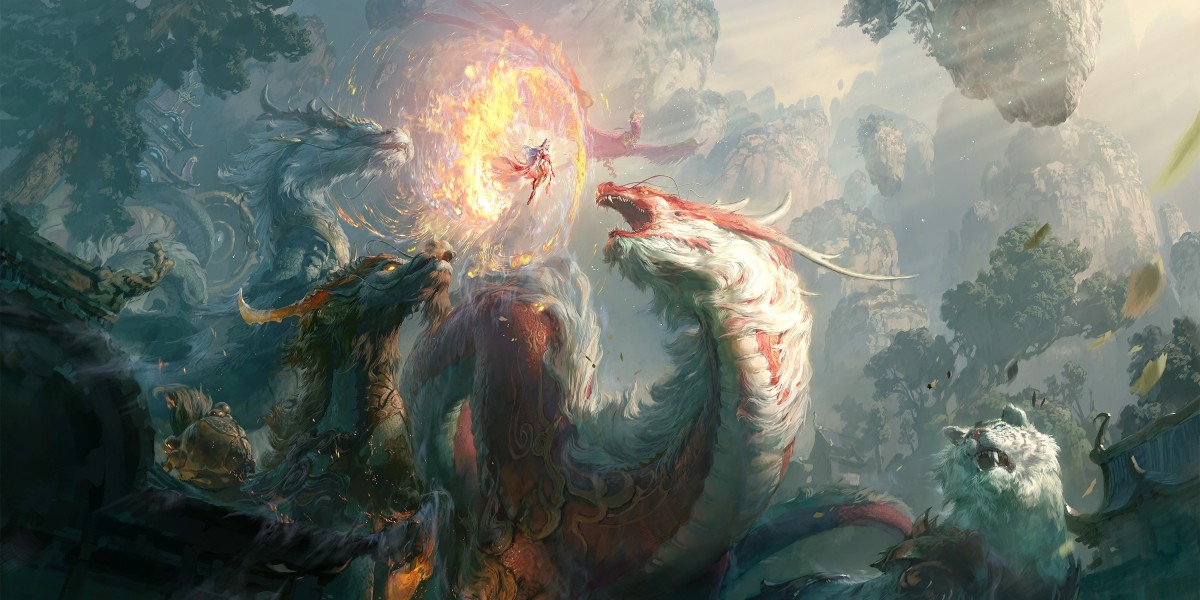Chinese calligraphy, an ancient and revered form of art, is much more than simply writing words—it’s an expressive and deeply philosophical practice that draws on centuries of history, culture, and technique. The use of the Chinese calligraphy brush is central to this art form, playing a crucial role in shaping not just the visual appearance of the written characters but also the emotional and spiritual depth conveyed in each stroke. Understanding the significance of mastering Chinese calligraphy brush techniques requires a deeper look into the history, the philosophy, and the intricate skill involved in using this brush.
Historical Context and Evolution
Chinese calligraphy has roots stretching back thousands of years, with evidence of its practice as early as the Shang Dynasty (1600–1046 BCE). The art of writing was not just a method of communication but a way to embody beauty, knowledge, and philosophy. The Chinese calligraphy brush, which evolved over time, was designed specifically to capture the fluidity, motion, and nuance of the brushstrokes. Unlike the rigid, mechanical forms of modern writing instruments, the Chinese brush allows for a variety of strokes, pressures, and motions that create a unique visual texture that is both dynamic and expressive.
The early calligraphy brushes were made from animal hairs—typically from weasels, rabbits, or goats—attached to a bamboo or wooden handle. The softness and flexibility of these bristles allow the brush to glide across paper or silk with grace, which is essential for creating the varying widths and textures that characterize Chinese characters.
Over the centuries, as Chinese civilization advanced and diversified, so too did the practice of calligraphy. From the oracle bone script used in the Shang Dynasty to the more fluid and refined scripts of the Tang and Song Dynasties, the use of the calligraphy brush became a symbol of intellectual and cultural achievement. Calligraphy was often practiced by scholars, poets, and statesmen, who saw it as an essential form of self-expression and an embodiment of personal virtue.
The Philosophy Behind Chinese Calligraphy
At the heart of Chinese calligraphy lies the concept of "qi," which can be roughly translated as the "life force" or "vital energy" that flows through all living things. In Chinese calligraphy, this energy is captured through the brushstrokes, each of which reflects the artist’s state of mind, their inner harmony, and their understanding of the world around them. The brushstroke itself is a representation of the moment, fleeting and alive, imbued with the artist’s emotional and intellectual state at the time of creation.
Calligraphy is considered a meditative practice, one that aligns the mind, body, and spirit. The process of mastering the Chinese calligraphy brush involves not only learning how to control the brush itself but also achieving inner balance and focus. Each stroke requires the artist to remain fully present, paying attention to the brush’s movement, the paper’s texture, and the rhythm of the writing.
This connection between the physical act of writing and the mental and spiritual state of the artist is what sets Chinese calligraphy apart from other forms of writing. It’s not just about creating legible characters; it’s about channeling the flow of energy into the brush and allowing that energy to express itself through each stroke.
Mastering the Chinese Calligraphy Brush
Mastering the Chinese calligraphy brush is a lifelong endeavor that demands patience, discipline, and dedication. Unlike many Western writing tools, which are designed to be used with speed and efficiency, the Chinese calligraphy brush is meant to be wielded slowly and thoughtfully. Every stroke, every change in pressure or direction, is a conscious choice that contributes to the overall aesthetic and meaning of the character being written.
The technique begins with the basic grip of the brush. The brush is held upright, with the tip of the bristles poised just above the paper. The artist’s grip should be firm but flexible, allowing for control without tension. The fingers and wrist should remain relaxed, while the arm should provide the necessary movement to guide the brush across the paper.
The key to effective brushwork lies in understanding how to vary pressure and speed. The brush must be able to switch between light, delicate strokes and heavier, more forceful marks. The character’s form emerges through this subtle dance between the brush’s movements and the artist’s intention.
Learning the Strokes and Characters
Chinese calligraphy consists of several major script styles, each with its own distinct brushwork techniques. The most commonly practiced styles include:
- Seal Script (篆书, zhuànshū): An ancient style that was used for inscriptions on seals and stone tablets. It is characterized by rounded, thick strokes.
- Clerical Script (隶书, lìshū): A more stylized and simplified form, often used for official documents during the Han Dynasty.
- Regular Script (楷书, kǎishū): A more standardized form that became widely used for print and publishing. It is neat and structured.
- Running Script (行书, xíngshū): A semi-cursive style that blends the regular script with the flowing spontaneity of cursive.
- Cursive Script (草书, cǎoshū): A highly stylized and abbreviated form of writing, where characters are written with sweeping, fluid strokes.
Each script demands a different approach to brushwork, as the strokes vary in length, complexity, and fluidity. Beginners often start with regular script to build foundational skills, but advanced practitioners may experiment with the other scripts to express their individuality.
To master Chinese calligraphy, one must first practice basic brushstrokes. These include the horizontal, vertical, and diagonal strokes, as well as the dot, hook, and turn. Each of these individual strokes is combined to form characters, and the mastery of each is essential for achieving proficiency in calligraphy.
A key element of this practice is repetition. Just as an athlete trains their body through repetitive movements, calligraphers hone their skills by writing the same characters or strokes repeatedly. This repetition builds muscle memory and helps the artist develop the fluidity and precision needed to execute more complex characters with ease.
The Role of Paper and Ink in Chinese Calligraphy
The materials used in Chinese calligraphy are just as important as the brush itself. The traditional materials include rice paper, silk, and special ink stones. The texture and absorbency of the paper affect how the brush moves across it, and the quality of the ink impacts the depth and richness of the strokes. The ink is traditionally ground from an ink stick and mixed with water, providing a tactile and meditative element to the process.
When choosing paper, calligraphers seek a balance between smoothness and absorbency. Too much absorbency can cause the brushstrokes to bleed, while too little can cause the ink to sit on the surface of the paper without capturing the subtle nuances of the stroke.
Cultural Significance and Preservation
Chinese calligraphy is not just an art form but a cultural treasure. It has played an essential role in preserving Chinese culture and philosophy over millennia. The practice of calligraphy was historically intertwined with the study of Confucian classics, poetry, and philosophy. Scholars and intellectuals throughout Chinese history were expected to master calligraphy as part of their education.
In modern times, Chinese calligraphy continues to be a vital cultural expression. Many contemporary artists combine traditional calligraphy techniques with modern aesthetics, creating works that blend the past with the present. Despite the advent of digital writing technologies, Chinese calligraphy remains a deeply respected practice and is seen as a bridge to the past, connecting the present with centuries of tradition.
Conclusion
Mastering Chinese calligraphy brush techniques is an ongoing journey that requires dedication, practice, and a deep understanding of both the physical and philosophical aspects of the art. It’s a practice that goes beyond creating beautiful characters—it's about embracing the flow of energy and connecting with the rich cultural heritage of China. The Chinese calligraphy brush, with its unique design and flexibility, is a tool that allows the artist to express their innermost thoughts, emotions, and connection to the world in each brushstroke.



